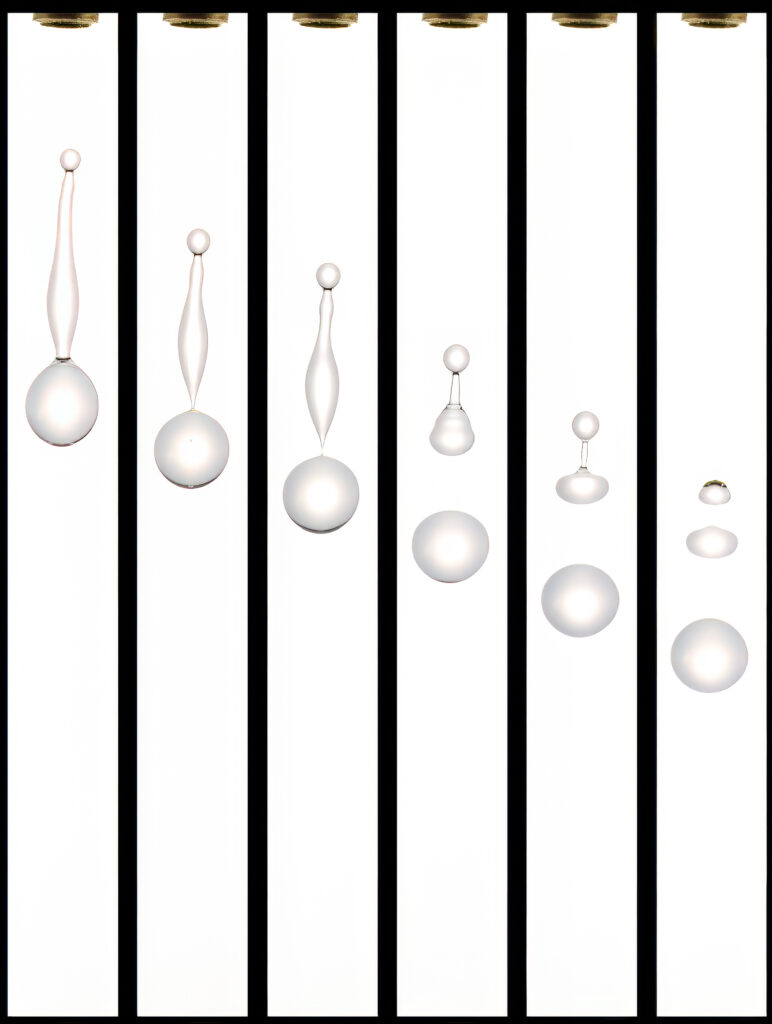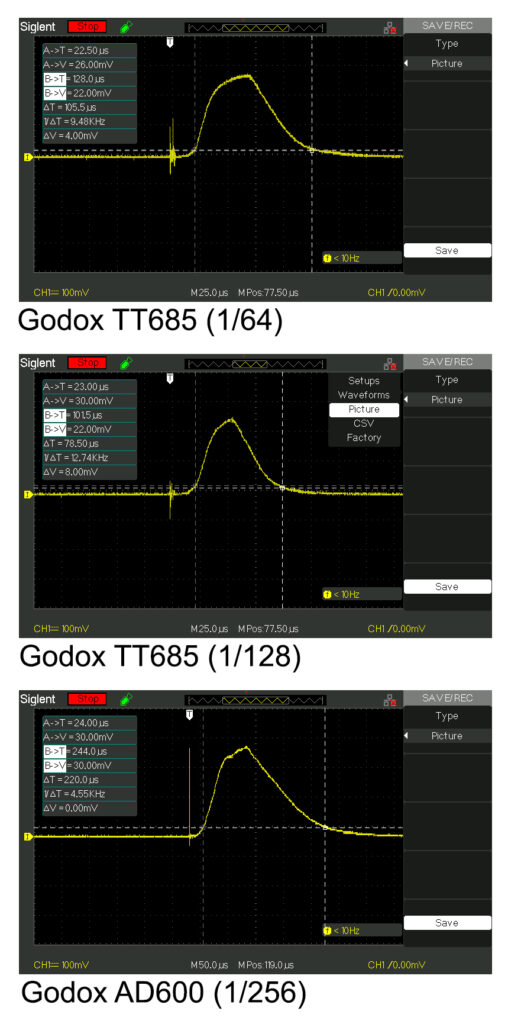Speedlight Speed
I sometimes see comments made about motion blur being created as a result of either using a combination of different speedlights or using a group of speedlights set with different speed settings. I just wanted to go into a bit of detail on how I analysed this issue to the best of my limited knowledge on the subject.
I am going to use the values I calculated for the speed of the falling drops using my waterdrop setup when it comes to calculating my final results.
This series of images were taken in 1 millisecond (1000 microseconds) increments. To capture these images I actually used one of my Godox AD600 battery powered studio speedlights so that I could capture a good white background. They are more powerful but not as “fast” as the Godox TT685 speedlights I generally use for waterdrop photography.
I usually use 4-5 Godox TT685 speedlights set all at the same speed, usually 1/128 and sometimes I have even supplimented these with 1 or 2 Godox AD600 at 1/256 for background lighting
I have only included this photo to try and give a visual context to how much a drop moves in 1000 microseconds prior to elaborating on how I tested the speed and what impacts it had regarding any motion blur.

The actual power output of the speedlight doesn’t change, rather the duration of the light changes. The more powerful the light, the longer the light is activated. Too long and the image being captured can be illuminated long enough to capture movement , resulting in a possible motion blur.

I used an oscilloscope to measure the duration of my various speedlights. I used a T.01 measurement which means the timing starts when the speedlight is at 10% power until it drops back down to that level. Some flash manufacturers will advertise the T.05 value rather than the T.01 because it will give a faster flash specification.
The Godox TT685 at 1/64 was 105.5 microseconds, and at 1/128 it was 78.5 microseconds. The AD600 studio speedlight was 220 microseconds.
Because I use the all the TT685 speedlights at the same speed settings there is no potential difference. However, to illustrate what the time difference could be assume I used some TT685’s at 1/64 and some at 1/128. There could be a time difference of 27 microseconds.
Now at the risk of seeming pedantic…….I had previously calculated that my drops fall at about 2.43mm (0.0956″)/millisecond. Because I am discussing such small measurements I will refer to it as 2430 microseconds/micrometer. So with the difference of 27 microseconds between the two speedlights the drop is going to travel just 90 micrometres (0.09mm or 0.0035″) until the slower speedlight extinguishes.
This distance that will get captured is about the equivalent of the thickness of a human hair or a sheet of photocopy paper. It will not make a major difference to the image especially considering some cameras will be doing automatic sharpening or you may do some form of post processing such as Adobe Lightroom.
Obviously various speedlights and situations will create slight variations but personally I have never experienced any motion blur or dramatic change in the captured image – but I do get out of focus blur when the caputred collision extends past my depth of field, but that’s another story.